
Lets be real, the ads we see with the cute embroidered roses, the Blue and white stripes, the bows, and the distressed shirts, oversized hoodies that reach your knees, the 'street' look... its super freaking cute! You just couldn't resist adding a few to your wardrobe.
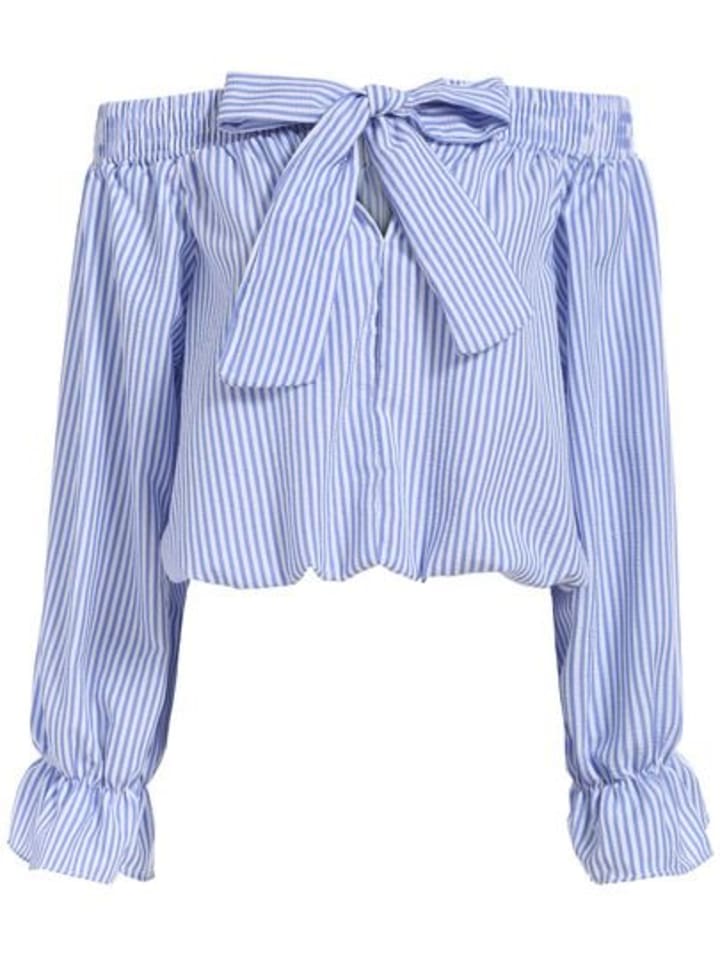
The problem is, that was a fashion trend in 2019, you bought four outfits in this type of design, and they're obsolete now in 2021. Why? Because of fast fashion, baby! Affordable fashion stores for young teens and adults, such as Rue 21, carry mostly fast fashion. Items you've seen celebrities wearing recently- at a just slightly-above-my-wallet's-comfort-level price. Most people think, heck I'll wear it for years, so what's the harm?
You end up walking away from the store with 4 things, and paid nearly $145 for them! Still, they had the audacity to ask for your e-mail, which you meekly give out of politeness (You'll be getting weekly emails for the rest of your life, by the way. It's essentially selling your soul to the retail devil).
If you're a high fashion kind of gal, these trends that sometimes last literally days, really throw off your groove-- and your wallet. Now, if you're a little lower maintenance like I am, it's at the very least annoying. I don't mind wearing out of fashion clothing, but sometimes you don't realize how immobile some of those trends can make you when you wear them.
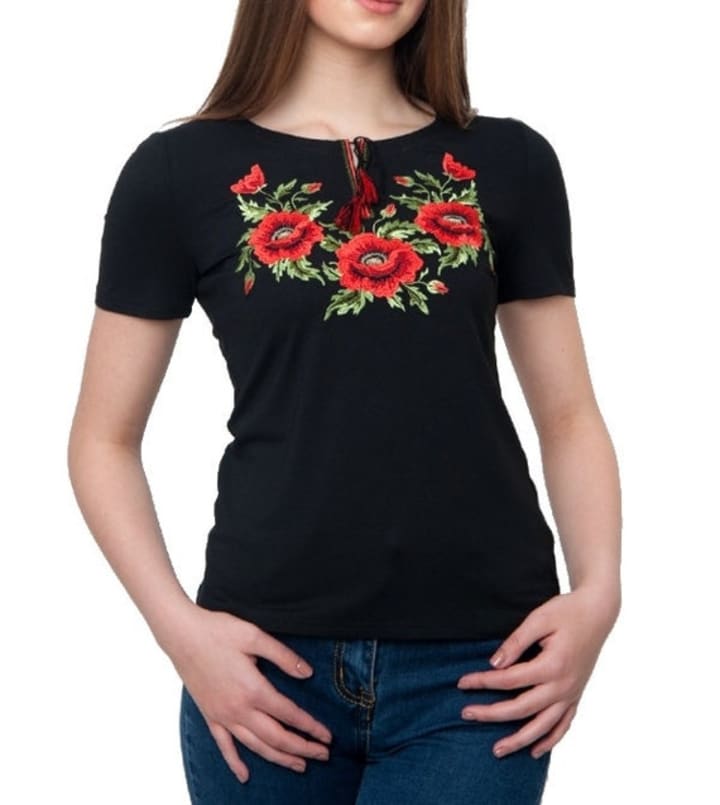
Like in late 2019 early 2020 when the large bows at the ends of your sleeves were popular for women. Those looked so adorable- and still do. But trying to cook with those? Impossible. Don't even get me started about trying to re-tie them when they come undone in the wash. Using the bathroom is almost impossible. Then there's the time I was practicing my dance routine and one of them smacked me in the eyeball. Fashion is dangerous, ladies and gents!
Sometimes, fast fashion trends just end up being too much of a hassle to try and keep wearing. I've recycled most of mine to the Goodwill or donated them to my local Church.
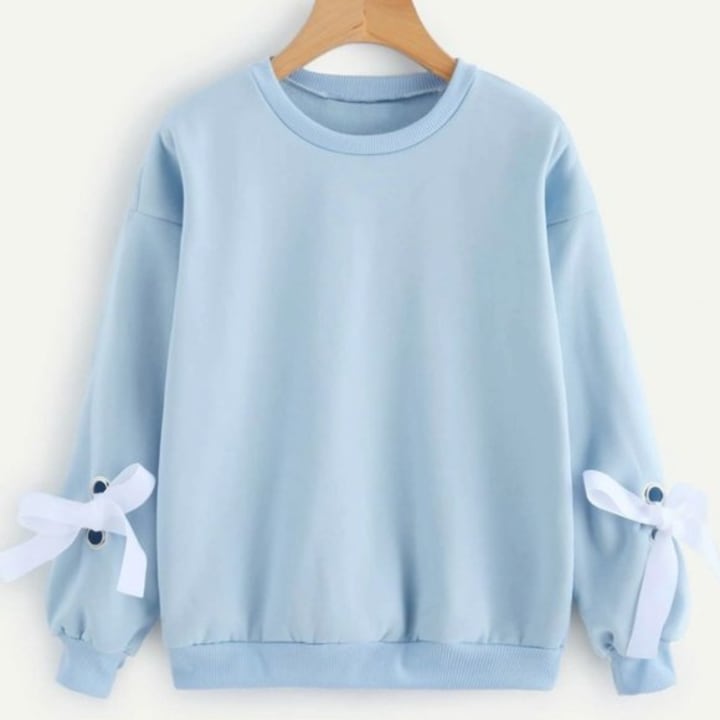
The other problem with fast fashion is that fast= bad product. I can't remember the last time I've been to Rue 21, bought something, and not had a problem with it. Around Valentines Day this year, I went there in search of leggings. A year of only leaving the house to work my fast-food job had caught up to me. For the first time in my life, I'd gained at least 4 sizes and was now shopping in the plus size section. So, hearing about one of my favorite stores having a new "Plus" area of their store, I went hunting.
I was a little disappointed at how under stocked and over picked it was, but that must mean the clothes are bomb, right? I grabbed a pair of gray leggings with large side pockets (for your phone, wallet, etc.). I checked out, it was my only item, and came up to $19. I get home, put on my pants for my one year anniversary date, and guess what? One of the seams on the side wasn't stitched! It was most likely due to a pattern cutting problem, as there really wasn't a lot of hemmed fabric in that area to begin with.
I was disappointed and discouraged, and this small thing actually lead me into a spiraling night of body dysphoria. I felt awful the entire night about my body, I tried to push it aside, tried to reassure myself that it was a bad product, not my size that had made them split. That night was the worst I'd felt in years. I was in a funk of negativity and self loathing, all because of a $19 pair of leggings.
Later upon inspection, I found that even in places the pants fit me loosely, there were more breaks in the hem. I was slightly relieved that it was just a crappy product, but also pissed, because I just spent almost $20 on a crappy product.
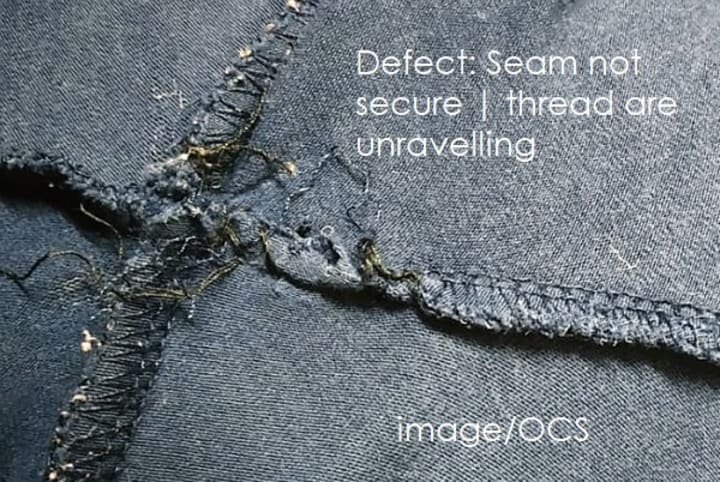
Another example of this, is recently they had their end of summer sale, Buy one dress get one Half off. I found a cute Plaid strapped dress, paired with a white tee, as well as a loose t-shirt tie-dye dress. They were both the kind of cute but casual style I've tried to stick with. I also found some very soft flannels, and bought a blue and green one. Check out price was ridiculous- even with the 10% discount they gave me after having to rip a hole in one of the shirts to get the security tag off. But I can't remember the exact price. I get home, try everything on and the first thing I notice is they all have threads hanging off of them somewhere.
This once again, is a sign of poor sewing etiquette. . I don't know a lot about sewing, but I've been doing it since I was 5, so I know enough to say that, frays on hem lines means the whole thing could just unravel one day. Especially if you pull on it instead of cutting the string.
I Highly suggest checking out this post by Justine Leconte, on how to spot good and bad quality clothing.
These issues of quality, as a reason I don't purchase fast fashion isn't even mentioning where these clothes come from. Most, if not all, are unethically sourced. A large amount of clothing from fast fashion companies comes from factories in areas like Bangladesh, whose already known for their poverty wages and unsafe procedures.
The disaster in Rana Plaza in 2013 caused the injury to 2,600 garment workers, and the deaths of 1,100. This was the biggest garment worker related incident that made worldwide news since the Triangle Shirtwaist Factory fire, in the winter of 1911. The Triangle Shirtwaist fire killed 146 total, which included some jumping to their deaths.
This issue, which was caused by the managers locking the workers in the rooms they worked in, inspired new labor laws. The conditions American workers were subjected to during the Industrial Revolution was deplorable. This event took place after the creation of Labor Day, and brought light to a lot of other issues such as child labor and poor pay.
I specifically remember an American Girl movie centered around the industrial revolution. It was "Samantha: An American Girl Holiday." Samantha lives with her Grandmother in a fairly nice house. Next door, a girl named Nellie moves in with her two sisters and father. They become fast friends, Samantha taking on Nellie's chores and teaching her to read.
They create a deep bond, over the mutual loss of Nellie's Mother, and both of Samantha's parents. Samantha's uncle visits and announces his engagement to Cornelia, and Samantha is unhappy. Soon after, she moves to New York with her Uncle and soon to be Aunt.
After Nellie's father dies, she and her little sisters Bridget and Jenny are sent to a dismal orphanage run by a thieving matron. Samantha rescues the girls and hides them at home. Nellie secretly takes a job in a factory to support her little sisters. Samantha tracks her down and brings her home, then bravely speaks out against the cruelty of child labor at her school. Eventually, Samantha's Uncle Gard and his new wife Cornelia adopt the orphan sisters.
- Wikipedia
This seems to have a happy ending, but the part that plays in my head is when Nellie was in the factory, she actually had a needle from the sewing machine she was using go straight through her finger. It started bleeding everywhere. Samantha begged for her to leave, and Nellie's supervisor said if she left the room, she lost her job. The thought of not being able to provide for her sisters kept her standing there in thought at a moment she should have fled as fast as possible. This mistreatment of children and complete disregard for safety is what I think about when I think of the Industrial Revolution in America.
Their portrayal wasn't far off, come to find out. During the American Industrial Revolution, Americans were on average working 12 hour days, 7 days a week just to get by. Children as young as five were subjected to sweatshop conditions, standing on their feet for extreme periods of time, working in mines, being put in dangerous situations, not allowed bathroom breaks. All for a fraction of what an adult made, doing the same thing. Poor Immigrants and children were among those in the most un-safest of conditions.
The Triangle Shirtwaist Factory Fire was a catalyst for the increase of labor unions, which back then were far and few between. It lead to legislature making Child Labor illegal.
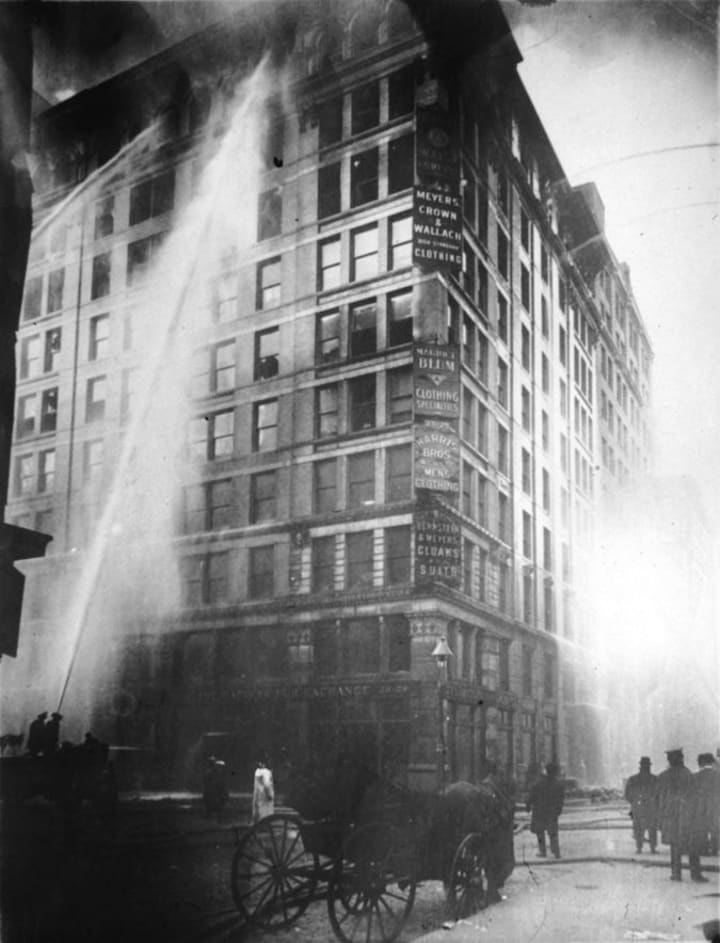
Those in Rana Plaza didn't even have the chance to contemplate their fate. This disaster was caused by structural cracks that were discovered but ignored by building inspectors the day before the incident. This was known as the deadliest Garment Industry Disaster in History, and it seems we haven't learned. They're still underregulated, building inspections being ignored, and improper procedures in place for safety.
Though there does seem to be more light being shed on the issue globally, it seems as if our attention and words have done little but take up time in our own lives. In my research, I've found no improvement of policy or procedure on a regional or national level.
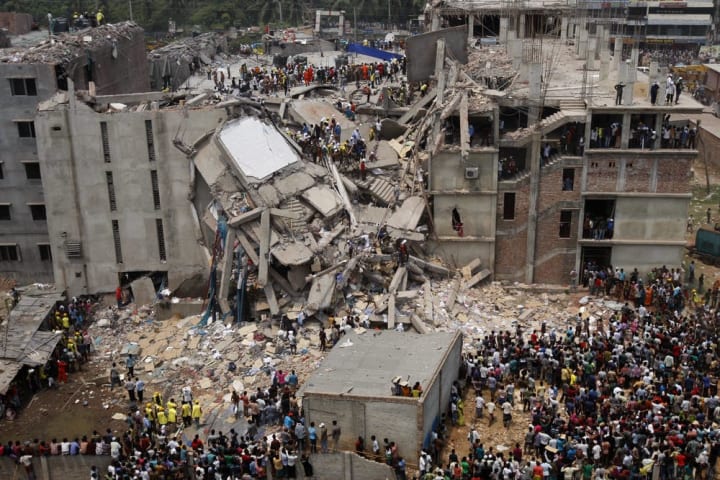
Even today, they still are treated and paid poorly.
there's mountains of waste. the cost of your fast fashion shirt on sale is close to a month's salary for these workers in Bangladesh.
So, if they pay their workers little, and the material and outcome are poor, how come something as simple as leggings cost you two hours of work? the most probable answer is profit. With outsourcing cutting most business costs down by _____%, and using cheap materials, they're able to make products that look nice on the rack. This increases your likelihood to purchase at a higher price than if you could tell right away the quality was poor (And with the current global situation, their fitting rooms are essentially like getting into area 51).
This leaves them with substantial profit. Okay, that sucks. But their employees must be paid pretty well, right? In the case of Rue 21, their regular retail associates make an average of $10 per hour, but range from $8-14.
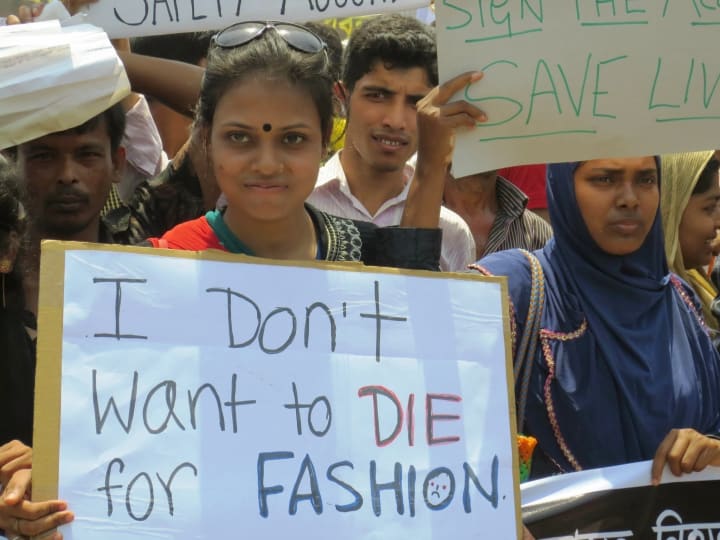
For now, my fast fashion days are over. Subsequently, so are my days of meandering through the racks at Rue 21, hopping from one shop to another in my almost vacant town mall. No more window shopping, no more fast fashion.
Nowadays, I mostly try to shop sustainably. I just got6 pairs of jeans from the Goodwill. . Those 6 pairs of pants cost me $38. Not only am I re-using clothes, and reducing waste, I'm saving money. In some cases, like when I visit Salvation Army, I'm also donating to a worthy cause.
I've had friends and parents of friends say to me, "Oh I could never shop at a second hand store, it's so gross and unsanitary." I even had one person tell me they'd feel "too poor if they bought something there." These were all things I heard growing up. Back then I wasn't sure what to say. My mother got me clothes at the goodwill because we couldnt afford new clothes all the time, and kids grow so fast. I never resented my mother for buying me used clothes, nor did I hate the people who'd said those things to me. They simply had a different world view than I did. But it did instill a stigma in me for a long time that wearing used clothes meant you were poor. And being poor meant that you were 'less than.'
I know now much differently. Shopping at a certain store doesn't make you poor. And being poor doesn't make you less than. It just means you have to make your money stretch, and you need to make smart decisions with your money.
I don't think the argument of stigma for buying used clothes is very prevalent in our society today, versus 17+ years ago when I was a kid. A lot of people thrift, it's even a trendy new way some young people make money! They buy some old threads and re-vamp them before selling them online. Now, thrifting is cool, being sustainable is cool, and finding a good deal? Freaking rad.
My closing statement is this: I no longer chase after fast fashion. I'm way too lazy, way too broke, and way too frustrated with the cons the fast fashion industry has caused for me personally, as well as societally. I'm not urging you to also stop buying fast fashion. Do what you want, you go girl and/or guy! But I think it's important to talk about the future. My future, your future, the planet's future. If fast fashion is all we go for, we're going to end up in a world full of garbage, full of perfectly good stuff wasted. A world of worker exploitation, fueled by our own money. Money that goes to these large companies, who profit off of their worker's desperation caused by poverty or fear of poverty. Is this really what you want out of your $15 cheaply made belt, and your $27 formal shirt that's falling apart at the seams?
Because it's not what I want.
____________________________________________________
Like what you've read? Consider a tip, to help fund future stories.
If you'd like to learn more, here's a great article that highlights a bit more of what I've discussed:
sources
https://www.payscale.com/research/US/Employer=Rue21%2C_Inc./Hourly_Rate
https://www.history.com/topics/holidays/labor-day-1
About the Creator
QuirkyMin
Aspiring writer, sharing articles of personal interest as well as original short stories.
https://linktr.ee/quirky.min


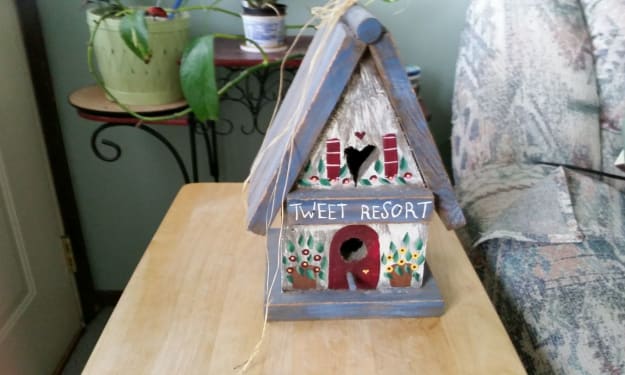



Comments
There are no comments for this story
Be the first to respond and start the conversation.